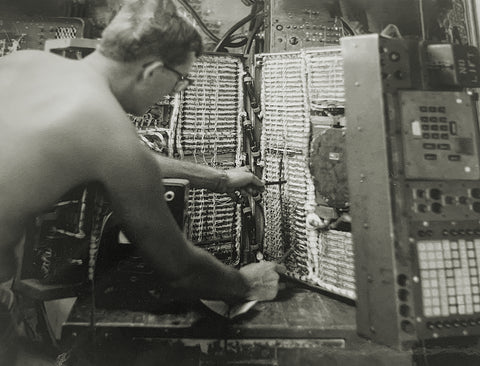
The FADAC Was Used to Calculate Artillery Firing Data. Was it One of the First Personal Computers?
The next time you talk to someone of a younger generation about the war, you can rightfully tell them that we actually used computers in Vietnam. It was my job to repair them. I believe the FADAC computer was the first standalone digital computer ever used by the Army in a combat environment. The FADAC was developed to be used in the field to compute artillery firing data. It was supposed to replace the manual process used at the time to set the guns. It even had the capacity to enter weather information collected by weather balloons.
I was drafted into the Army on July 3, 1968. I had been working as a computer programmer for Sears, Roebuck and Co. I was initially assigned to radio repair school at Fort Sill, Okla., for advanced training and was then assigned to the Staff and Faculty Battalion, where I was introduced to the FADAC. Once I learned how to use the new machine, it became my job to train Army personnel to use it, primarily officers on their artillery rotation at Fort Sill. In May 1969, I was assigned to the 1st Cavalry Division in Phouc Vinh, Vietnam, as a FADAC computer repairman.
this article first appeared in vietnam magazine
As stated by the Army, the purpose of artillery automation is to “make fire support more responsive, effective, and accurate and to minimize human error,” which led to automating gunnery with “the electromechanical M15 Gun Data Computer in the 1950s and later the electronic digital M18 Field Artillery Digital Automatic Computer (FADAC) in the 1960s.” The operator entered the gun and target locations and the computer told you the correct settings. The FADAC was mobile to a certain extent but weighed over 200 pounds and had a heavy case plus a table and generator to provide power. In 1957, the Army specified that the FADAC “would be designed to operate under severe field conditions without a major overhaul for 2,500 hours” and “would be easily maintained and operated,” among other things.
The first FADAC we repaired in Vietnam was hit by shrapnel that evening and was sent to Saigon. We received a steady flow of computers to repair at Phouc Vinh afterwards. In most cases, the problems were loose circuit boards, filters hopelessly clogged with dirt and sand, or circuit boards made totally inoperable due to non-functioning filters. Over the years I’ve talked with a lot of artillerymen who for the most part have told me that “Freddie” FADAC was totally useless, since they could calculate the firing settings faster using the manual method. I also heard it was used for the larger 8-inch guns and not for the 105s and 155s since it was easier to fire a first shot more quickly and then adjust. The larger shells required more accuracy due to their killing radius. This comment also seems to imply that the FADAC may have been more accurate.
My two trips out to FSB Buttons and LZ Jaime in 1970 to repair the FADACs there verified that there were training issues. In one case the filters were so clogged that the machine overheated and would not work. In the other case, the power cables to the generator crossed a path used by vehicles, leaving the cables hopelessly frayed. Some people also complained that the generator was very loud and could be targeted by enemies outside the wire. Others admitted they used it as a coffee table.
There is little doubt that the FADAC was not correctly designed for life in the bush. It was heavy, required a dust-free environment, constant maintenance, and a certain level of training in those early days of computerization. We could perhaps say that this was one of the first personal computers. What a place to test the concept!
I have no axe to grind with the people who tried to use the FADAC. They had a much tougher job than I did. As a draftee, I did what I was told in the best way I could, considering the circumstances. I did not fully appreciate that this was one of the first—if not the first—use of a small computer in combat. Needless to say, the rollout and usage was not the best—but that often happens when a concept is brand new.
This story appeared in the 2023 Summer issue of Vietnam magazine.
historynet magazines
Our 9 best-selling history titles feature in-depth storytelling and iconic imagery to engage and inform on the people, the wars, and the events that shaped America and the world.
